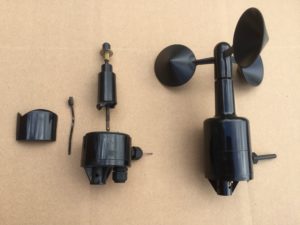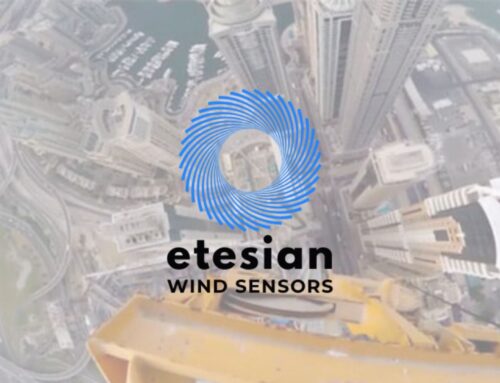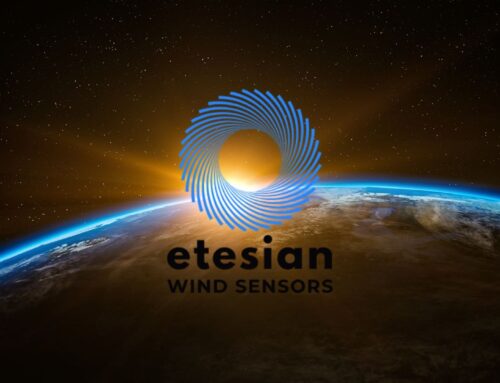In order to function at their best, anemometers should ideally be placed at as high a location on a mast or tower as is practical. Once installed, one never wants to revisit the installation again. On the boat mast, on the roof top or up a tower, it’s a job requiring removal of rigging or climbing or both.
In the case of a wired sensor, the sensor cable must be attached, routed and secured. Holes need to be drilled, the wires fished through, and then the holes caulked to properly finish the job.
Etesian’s new concept of a self-powered sensor eliminates all the drawbacks that come with a wired sensor; with the added bonus of protecting against damage to expensive electronics from lightning strikes.
It doesn’t happen very often, but when lightning does strike an anemometer the results are dramatic – even frightening. Recently we had a customer call and explain that their anemometer sensor had been struck by lightning and they needed a replacement. We were curious and asked if they could return the damaged sensor. There was silence on the phone for a bit and then they replied, “Well, sure, what’s left of it”. Once it arrived back at our facility we understood their response.
The anemometer that they sent back to us was destroyed; the body had melted due to the excessive heat of the lightning strike, the three conical cups were gone (who knows what happened to them), and the body as well as all of the internal components were fried; put simply, the anemometer was hardly recognizable.

On the left you can see the destructive consequences when lightning strikes a wind sensor. On the right is a completely intact wind sensor.
There was so little left of the lightning damaged sensor that we put a complete wind sensor on the right hand side of the above picture for comparison. Now, imagine if this had been a wired sensor, delivering even a fraction of the deadly voltage and energy down a sensor cable into your fountain control, crane cab, or other control facility. This lightning struck wind sensor is just another reminder of the safety benefits that come from using Etesian’s wireless self-powered wind sensors.



